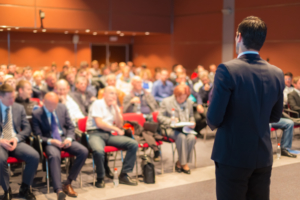Newsletter 2022
RePHILL trial: Prehospital transfusion - better outcome in major haemorrhagic trauma?
Over the past 2 decades, the management of major haemorrhagic trauma has undergone an evolution from crystalloid based to early blood products-based resuscitation. Historically, a large volume of crystalloid was funnelled into the patient in order to restore circulatory volume. This traditional way of resuscitation was currently regarded as ‘imbalance’, leading to tissue oedema and dilution coagulopathy. The new paradigm of trauma resuscitation has now focused on damage control surgery, tranexamic acid and blood product-based resuscitation.
The desire to deliver hospital-based intervention early in the patient pathway was encouraged following the improved survival rate seen in the war zones¹. Following some early reports of the benefits of early transfusion in military retrieval, casualty leads to research trajectories to consider implementing similar strategies in pre-hospital civilian settings.
So far, there is still a lack of strong evidence on whether prehospital blood product administration improves patients’ survival. Most of the studies done in this context were small sample case series or retrospective narratives. Only two major randomised trials have been published on pre-hospital blood transfusion strategy in comparison to standard care (0.9% normal saline), but the results were discordant, with one favoured pre-hospital plasma (PAMPER trial: 33% lower mortality) ² and other did not (COMBAT trial; no difference in mortality at 28 days) ³. In fact, the COMBAT trial was terminated prematurely due to intervention futility.
A recently published trial: Resuscitation with blood products in patients with trauma-related haemorrhagic shock receiving prehospital care⁴ (RePHILL: a multicentre, open-label, randomised, controlled, phase 3 trial) did not show superiority from prehospital RBC-LyoPlas compared to 0.9% normal saline. Total of 432 participants from trauma with suspicion of haemorrhagic shock (systolic <90mmHg, absence radial pulse, or hypotension thought to be due to haemorrhage) were included and randomly assigned to the intervention arm (RBC and LyoPlas in the ratio of 1:1 up to 2 units each) or control arm (0.9% normal saline 4x 250ml). The primary outcome from this trial comprised of composite outcome from mortality (time of injury to hospital discharge) OR lactate clearance OR both. Individual components from the primary outcome, all-cause mortality within 3 hours and 30 days of randomisation, prehospital timing, total blood products consumption and serious adverse event (organ failure, ARDS, VTE, INR, transfusion complication, infection) made up for secondary outcome in this trial. No difference in primary outcome was observed between the 2 groups. There were significantly higher blood products received and higher haemoglobin levels upon arrival to the emergency department in the intervention group, but this did not result in survival benefits. Similarly, both groups had no differences in risks of transfusion-related lung injury or complications.
There are several explanations why prehospital transfusion is a big success in war zones, but we failed to replicate it in civilian settings. Firstly, the average age of casualty in combat zones was relatively younger (20-29 years¹. vs 38-39 years in RePhill), presumed fit and healthy before the injury. This eventually leads to a better survival rate in most cases. Secondly, due to technical or logistic difficulties, evacuation and transport time to the hospital poses a real challenge in the war zones, therefore, the rationale of prehospital transfusion is justifiable in this situation, and the benefit was more apparent. The RePHILL trial was done in a well-established pre-hospital trauma network in the UK. This could potentially dilute the treatment impact of the intervention group because the time to the hospital was shorter (average of 90 mins), and the patient reaches the hospital before the benefit is apparent. Trauma is a global challenge to health care regardless of different geographical distributions. It is interesting to find out if this same strategy will yield a different outcome in places where transport time is longer (suburban areas or areas with a transport time of more than 90 mins).
Another major difference seen in the RePHILL was the use of Lyoplas (vs fresh frozen plasma in PAMPER trial) ². LyoPlas, or Lyophilised plasma, is a freeze-dried plasma produced by freeze-drying. During the time of use, only water is needed to reconstitute the plasma. It can be stored for years at room temperature without affecting its haemostatic capabilities. These features make LyoPlas an ideal product to be used on the road. However, a new challenge arises when comparing the efficacy between LyoPlas and FFP. In one comparative study, the coagulation activity from LyoPlas was found to meet the ‘required standard’⁵, but we are not certain if the ‘required standard’ is ‘on par’ with FFP. This could be the reason why the success of PAMPER was not seen in RePHILL. It is also interesting to know if other products (platelet, calcium, fibrinogen) apart from plasma have a role in prehospital settings.
The wide variability of composite outcome (Mortality or Lactate Clearance or Both) makes the results difficult to interpret, especially when the composite outcome is comprised of 2 different outlooks (patient-oriented – mortality, lab-oriented – lactate clearance). The decision to use lactate/ lactate clearance as an endpoint must be carefully examined. Lactate solely is not specific and limited to tissue perfusion in trauma. High lactate can be found in any injury resulting from regional tissue ischaemia, such as mesenteric ischaemia (blunt abdominal trauma), limb ischaemia (vascular injury), seizures (traumatic brain injury) or in a post-cardiac arrest state. It is difficult to be certain that the lactate that is measured is not due to these causes. In addition, due to the presence of lactate in stored red cells, the intervention group will have higher levels of lactate from the blood transfusion, making the results less accurate. Evidence from past literature did measure the lactate clearance and concluded that it is an independent predictor of mortality in trauma, however, these trials monitor lactate at a longer interval (between 6⁶ to 48 hours⁷) than RePHILL trial. Only one trial was reported in the literature that measures lactate as early as the first 2 hours in trauma⁸. Hence, we need more evidence to decide at what interval we should take the value as endpoint. Lactate and lactate clearance is no doubt a very good predictor of mortality. This value can be used for triage, decision-making, the need for emergency surgery and a prognostication scheme during resuscitation. However, due to many confounding factors from the lactate in this trial, the decision to use lactate as the outcome must be carefully revised and reconsidered.
Overall, this is a very interesting and thought-triggering study with few points of discussion. Pre-hospital transfusion is not plain sailing because it involves various aspects such as cost-effectiveness (cost of storage), patient safety (sterility, blood group compatibility, transfusion checklist, protocol for management of transfusion complications). This is a small baby step into a long path. Hopefully, the on-going trial Prehospital Plasma or Red Blood Cell Transfusion Strategy in Major Bleeding (PRIEST, NCT04879485; due completion in 2024) will provide additional value in prehospital transfusion strategy. Before we are certain that this strategy is beneficial and doable in a safe way, we just have to sit tight and watch.
References:
- Shackelford S. A., Del Junco, D. J., Powell-Dunford, N et al. JAMA, 318(16), 1581–1591.
- Sperry JL, Guyette FX, Brown JB et al. N Engl J Med. 2018 Jul 26;379(4):315-326.
- Chapman MP, Moore EE, Chin TL et al. Shock. 2015 Aug;44 Suppl 1(0 1):63-70.
- Crombie N, Doughty HA, Bishop JRB et al. Lancet Haematol. 2022 Apr;9(4): e250-e261.
- Hervig T, Doughty H, Ness P Et al. Shock. 2014 May;41 Suppl 1:39-43
- Odom SR, Howell MD, Silva GSet al. J Trauma Acute Care Surg. 2013 Apr;74(4):999-1004.
- Essi Heinonen, Timothy Craig Hardcastle, Hans Barle et al. African Journal of Emergency Medicine,Volume 4, Issue 2,2014.
- Marie-Alix Régnier, Mathieu Raux, Yannick Le Manach et al. Anesthesiology2012; 117:1276–1288.
[maxbutton id=”1″ url=”https://www.esaic.org/newsletter/” text=”Read the Newsletter” ]










